First: What is an atom interferometer?
Dorothee Tell: Interferometers are used in physics where particularly precise measurements are needed, especially when it comes to very accurate position measurements. Laser interferometers are quite common, for example, in which a laser beam is split, guided along two different paths and finally recombined. When they have travelled different distances, superpositions, so-called interferences, occur when the laser waves are combined. These can be measured precisely. Laser interferometers are therefore suitable for determining extremely precise changes in length - as is also used, for example, for the detection of gravitational waves.
Atom interferometers are based on a similar principle. However, it is not the laser waves that interfere here, but matter waves. We make use of the quantum property of atoms, according to which they can be described both as particles and as waves.
How does that work at the VLBAI?
Tell: In VLBAI, we cool atoms in a vacuum just above absolute zero so that we get a kind of atomic cloud in which the ultracold atoms are almost immobile and stay put. We then drop the atom cloud into a vacuum tube. The external forces then determine how the atoms move. Ideally, only the gravitational force of the earth, acts on the atoms, so that they fall down the tube undisturbed by other influences. With the atom interferometer, we measure exactly where the atoms are at which point in time and can determine the gravitational acceleration from this.
Ideally?
Tell: External forces, such as vibrations or magnetic fields, can have an impact on the atom cloud and influence the free fall or the position measurement. At the VLBAI, we go to great lengths to exclude even the smallest perturbations or to post-correct them from the measurements.
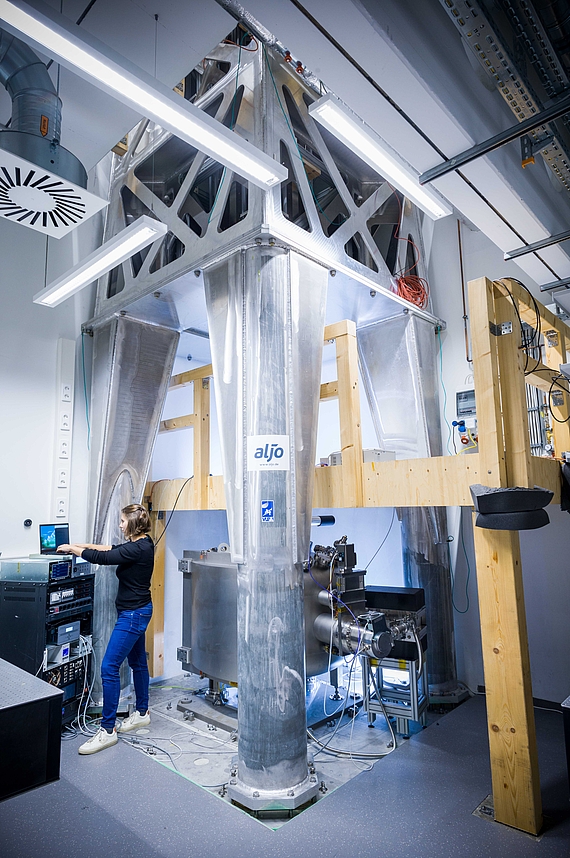
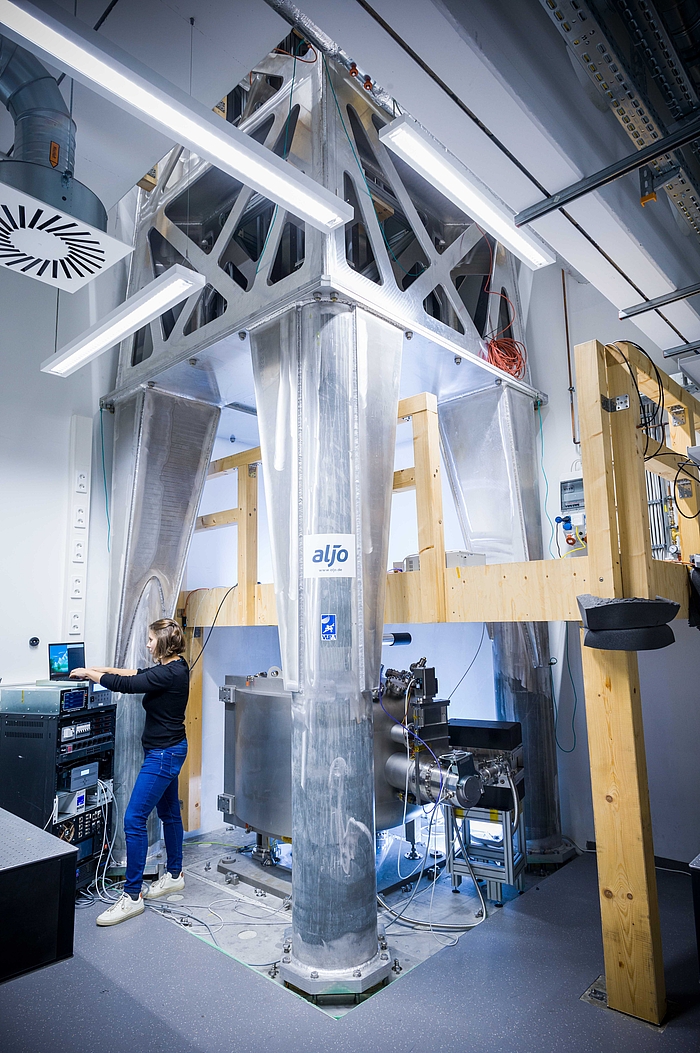
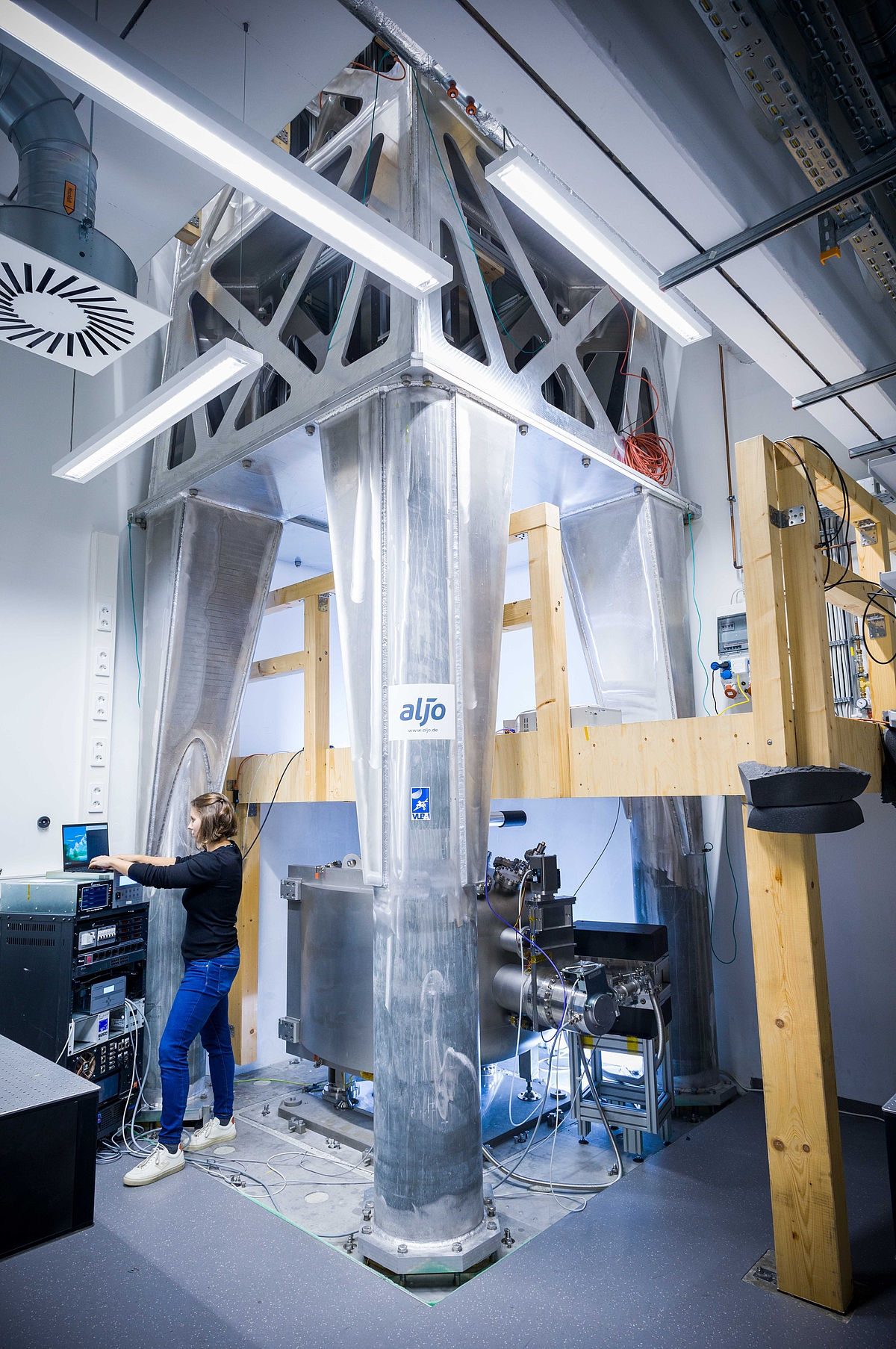 ©
Jan Hosan/LUH
©
Jan Hosan/LUH
Why is it so important to measure Earth''s gravitational field, and to do so with such great accuracy?
Tell: Because it helps us understand how our Earth is built. We can determine how the Earth''s mass is distributed. It is well known that the gravitational pull on the Moon is different from that on Earth. But it is not the same everywhere on Earth either. On a mountain, it is somewhat smaller than in a valley because the distance to the centre of mass, i.e. to the centre of the Earth, is greater. Above an underground cave, the value is somewhat lower than above solid rock because the mass is somewhat smaller. Gravimeters can be used to measure these differences. And with repeated measurements we can determine how the value changes over time and thus draw conclusions about changes in mass. For example, changes in the groundwater level can be determined because masses move in the process. These can be important parameters of climate-relevant processes, such as those being researched in the TerraQ Collaborative Research Centre. The more precisely we measure, the more precisely we can describe these processes.
But with the atomic fountain you can then only determine mass changes under the HITec.
Tell: That is correct. For measurement campaigns in the field, you need mobile devices. The Very Long Baseline Atom Interferometer is not located there because Hanover would be so interesting geodetically, but because it is a prototype at a university. With the VLBAI we are pursuing a different goal. Classical gravimeters have to be calibrated regularly to determine how disturbing factors influence the measurements. This is a time-consuming procedure in which numerous gravimeters are brought to a suitable location - such as a remote cave, for example, to exclude disturbance factors as far as possible. There they are run simultaneously in order to determine a reference value from all these measurements. Our ultimate goal is to make these large comparison campaigns unnecessary.
To achieve this, we plan to develop the VLBAI into a higher-level reference station for gravimeters. To do this, we need to increase the accuracy even further - and the accuracy depends on the length of the free-fall distance. The longer the atomic cloud is in free fall, the higher the sensitivity. In the VLBAI, the free-fall distance is about ten metres. There are only two other devices of this size in the world and the VLBAI is the only one that measures in absolute terms.
In the future, however, devices like the VLBAI will definitely be possible at geodetically interesting locations, and we have already thought about a mobile version on this scale.
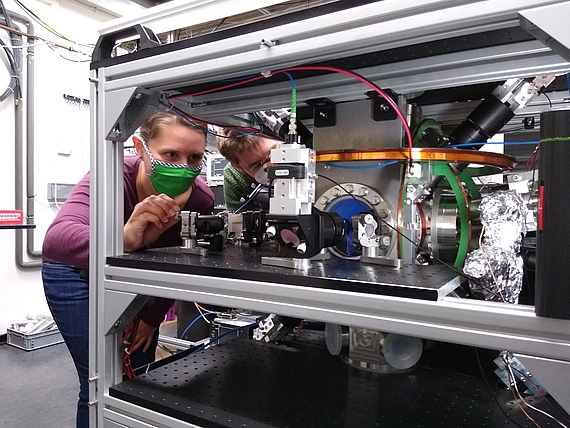
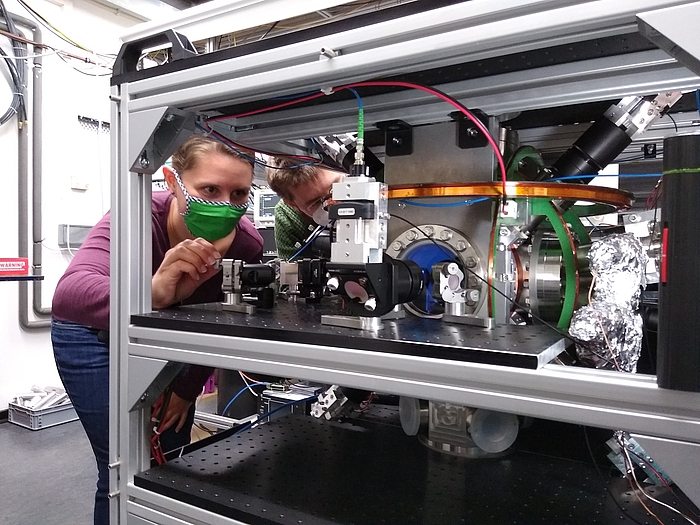
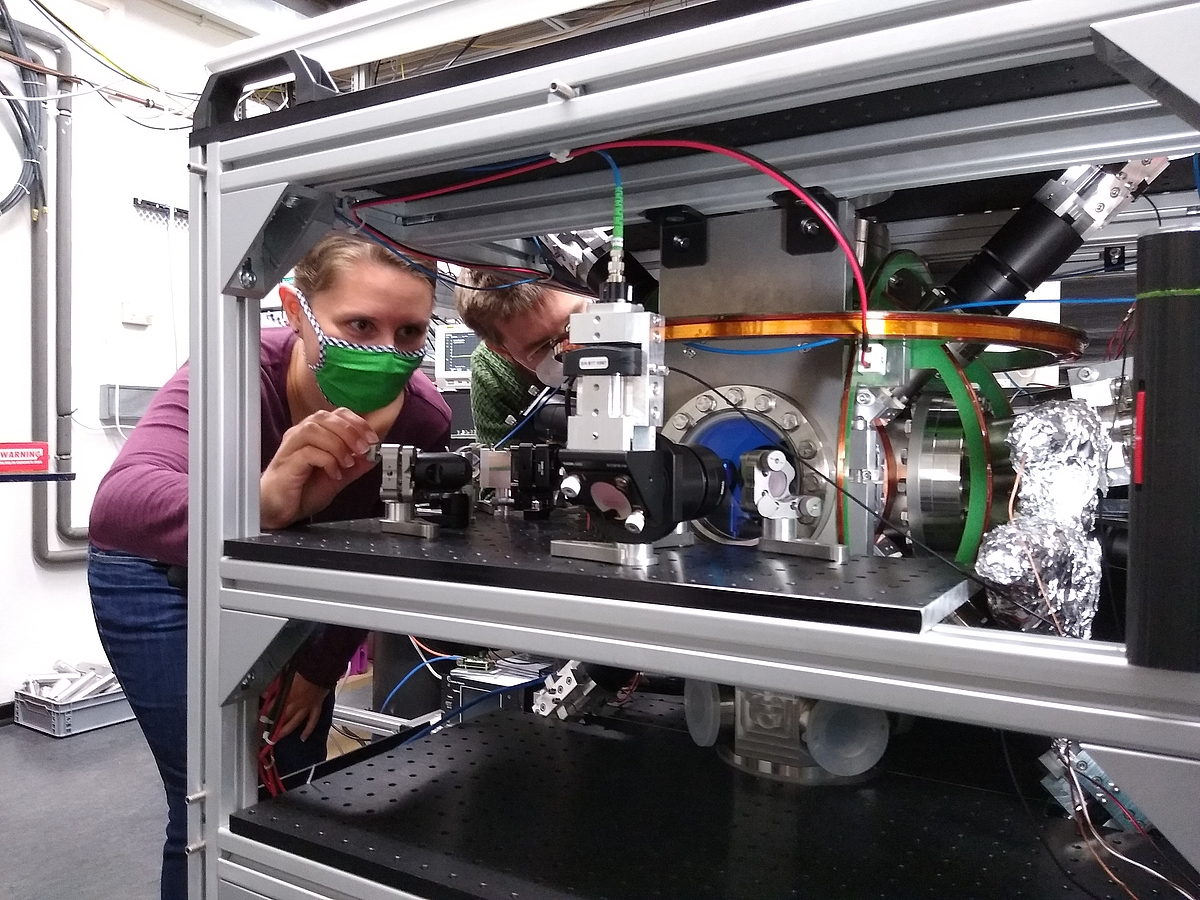
And then mobile gravimeters could be calibrated at HITec?
Tell: That''s right. To do this, measurements would be taken with both devices at the same time and it would be possible to determine precisely whether there is any measurement deviation in the transportable device that needs to be corrected.
What are the biggest challenges at the moment?
We have to get the bias and noise effects even more under control. In the VLBAI, we measure the position of the atomic cloud by determining its distance from a mirror at the bottom of the vacuum tube.
The biggest challenge at the moment is to prevent remaining vibrations of this mirror, or to measure them accurately. This is because vibrations cause disruptive accelerations and even a few nanometres per square second are too much. We are developing new types of acceleration sensors to be able to make even more precise corrections. And we have to prove that we can reliably achieve the accuracy we are aiming for.
Are there other applications for the atomic fountain besides the installation of a new reference?
Tell: Many! In the field of gravimetry, we are of course also advancing our own research. In TerraQ, for example, we are currently building a transportable atomic gravimeter ourselves. There are also research projects on fundamental questions of physics. For example, in the Collaborative Research Centre DQ-mat, where fundamental assumptions of quantum mechanics are being researched with the VLBAI, or the relationships between quantum mechanics and gravitational physics. A lot is still unclear here, and the atomic fountain is also designed for this purpose.









